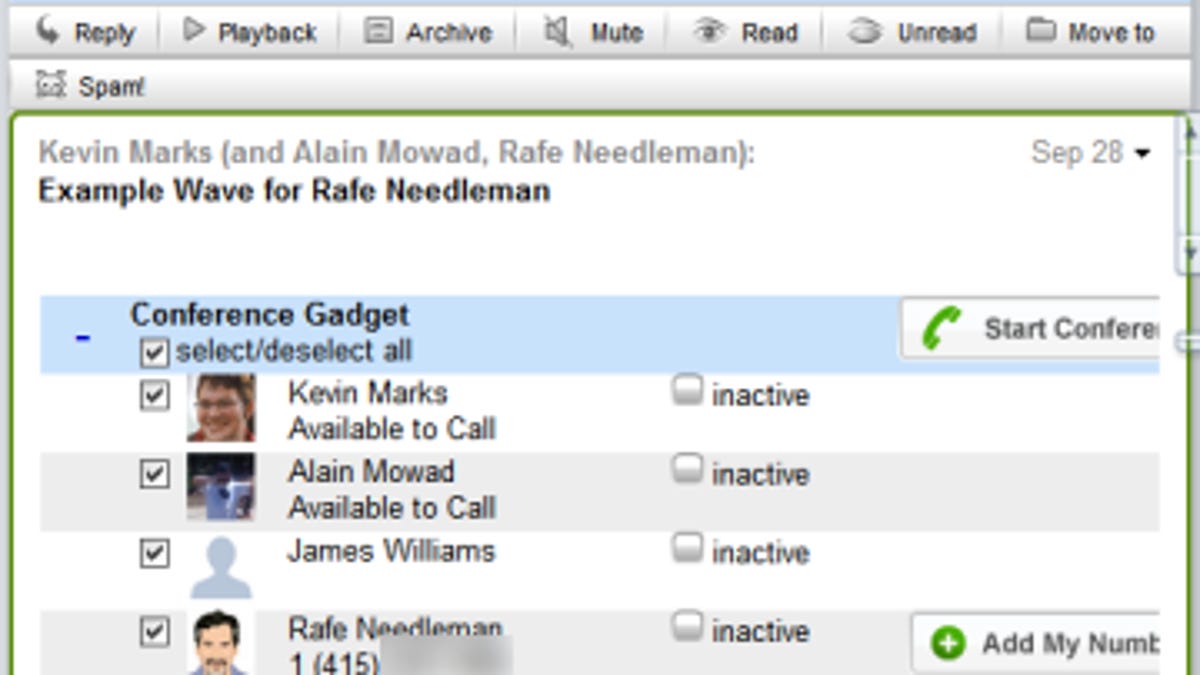Google Wave meets conference calls, with Ribbit
Ribbit's extension for Google's next-gen messaging app shows how the walls between text and voice can fall.

It's becoming clear that Google Wave, which is slowly emerging from closed beta, has potential to be much more than a text-messaging platform. As the telecommunications platform company Ribbit shows, and as does a frothy little videoconference app from 6 Rounds, Wave's architecture makes it a compelling platform for real-time streaming communication.
The Ribbit team recently showed me their prototype widget, which lets Wave users quickly set up a conference room inside a "wave" message on the service. Once you add the Ribbit conference widget to a wave, everyone in it becomes part of a potential voice chat. Users need to enter their phone numbers, which remain hidden from other users. Then anyone in the wave can call all the participants at once to start a conference. (Users can also call only particular people in the wave, if they wish.)
The cool thing about the Ribbit integration into Wave is how easy it is to get a conference going that's clearly related to a document (a wave) that a team is already working on. You also get a dashboard view of your conference where you can see who's on and who's not, and drop callers mid-stream.
Future additions to the service will include options to record calls and transcribe them -- for a fee perhaps.
6 Rounds is conceptually related to Ribbit, although with more of a focus on fun videoconferencing (with silly video effects and everything) and the sharing of YouTube videos. But the idea is the same: Within a de facto group on Wave, you can quickly add a conferencing widget to bring people into a conversation. See also Zorap from Demo, which is similar, although without a Wave widget.
It looks like both of these apps blend perfectly with the Wave experience, which is part e-mail, part IM, part groupware. They show how, in a modern communications system, the barriers between text and voice and video communication, and more interestingly between asynchronous and real-time communication, really do begin to dissolve.
What's not clear is how or if Google will integrate Google Voice into Wave. That's a big shoe that has yet to drop.
Click to see video demos of Ribbit, 6 Rounds, and other Google Wave extensions.

